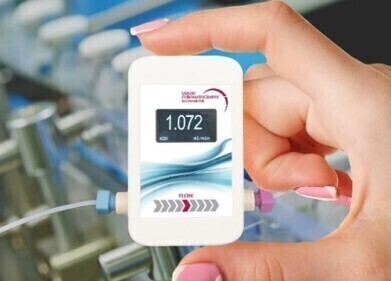HPLC, UHPLC
Does Splitting Tablets Work? — Chromatography Explores
Jan 25 2017
A recent study has looked at the practice of tablet splitting in paediatric medicine — specifically the result of tablet splitting antiepileptic drugs. Tablet splitting is simply the practice of dividing a tablet into halves or quarters to reduce the potency of the full tablet to the dose required. But, how does this affect the dose that is then administered to the patient?
Drug manipulation
Most medicines on the market are only released after extensive trials. Manufacturers must satisfy the relevant authorities that the drug is safe, works as it is designed to and that it can be manufactured to the tolerances meeting strict quality guidelines. All very good if you are an adult — because surprisingly, most medicines used for children are only licensed for use with adults.
This means that many medicines that children take are used off-label — the practice of using a medicine for something other than it was originally licensed. This does not mean that any law is being broken though — there are many reasons for using a drug off-label and it doesn’t mean that all the necessary testing has not been carried out. Unfortunately, the evidence suggests that the reason for use of adult medicines for children is due to profit considerations — something the US government has tried to address.
And this brings us to the practice of tablet splitting. The practice is not necessarily limited to adult medicines being used by children — tablet splitting is also used when a doctor might think a minor change to your dose is required and the tablet is not manufactured in small incremental dosages. The practice is also used when people have to buy their medicines — if a 500-mg tablet costs the same as a 250-mg tablets — you get twice the dose for your cash. But how safe is the practice?
A risky practice?
There are several methods to split tablets — in fact, some tablets are designed to be split. But, a recent study published in the journal Pediatric Drugs suggests that for some drugs the practice is not delivering the optimal dose. The team looked at four antiepileptic drugs that are prescribed to children. They analysed the tablets before and after they were split and measured the plasma drug concentrations using high performance liquid chromatography (HPLC). The role of HPLC in pharma is discussed in the article, The use of High Performance Liquid Chromatography (HPLC) columns in Biomolecule analysis.
The team found that almost 50% of the split tablet parts were outside of Indian Pharmacopeia acceptable weight deviations and almost 72% of the patients had plasma drug concentrations that were outside of the therapeutic range for the individual drugs tested. A worrying finding showing tablet splitting carries some risks as highlighted by the FDA in the US.
Digital Edition
Chromatography Today - Buyers' Guide 2022
October 2023
In This Edition Modern & Practical Applications - Accelerating ADC Development with Mass Spectrometry - Implementing High-Resolution Ion Mobility into Peptide Mapping Workflows Chromatogr...
View all digital editions
Events
Jan 20 2025 Amsterdam, Netherlands
Feb 03 2025 Dubai, UAE
Feb 05 2025 Guangzhou, China
Mar 01 2025 Boston, MA, USA
Mar 04 2025 Berlin, Germany



.jpg)










